1. 33% of Brits made New Year’s resolutions to improve diet
2. Better for You (BFY) Crisps and snacks outperforming the category by 9%
3. In a complex category ‘low and light’ is the most effective messaging
4. Healthy yoghurts are growing 48% in convenience
5. The cost-of-living crisis is holding the category back – for now
6. Protein bars are still a go-to product
7. Jerky and biltong have seen convenience value sales grow 44% YOY
8. One in three adults in the UK claim to eat their five-a-day
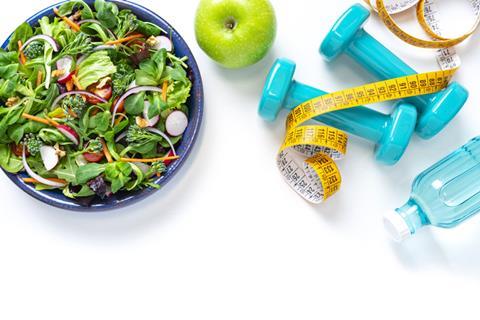
1. 33% of Brits made New Year’s resolutions to improve diet
Waistband feeling a bit tighter this time of year?
It’s not just you. According to research from Forbes Adviser, 35% of Brits’ resolutions focused on weight loss, while 33% were about improving diet.
“Everybody’s New Year’s resolution (including mine!) is that they’ve eaten too much and want to eat a bit more healthily,” explains Sue Nithyanandan from Costcutter Epsom.
“As a store we want to be mindful of that. Just today one of my staff was saying that people seem to be keeping away from our chocolate right now!”
To properly service post-Christmas blowout shoppers Sue has a formidable healthier snacking range in her store. This far-reaching cross-category offer takes in everything from Co-op Irresistible Gluten-free cookies to YFood drinks, Bear YoYos and Itsu rice cakes. She’s also trialling sushi with customers to see if there’s a healthy appetite for it in Epsom.
“We buy stock from Epicurium, who are really good at picking up trends, so I rely on them a lot,” says Sue. “I remember when ProperCorn came out. They were the first people who started selling it and now it’s absolutely everywhere.”
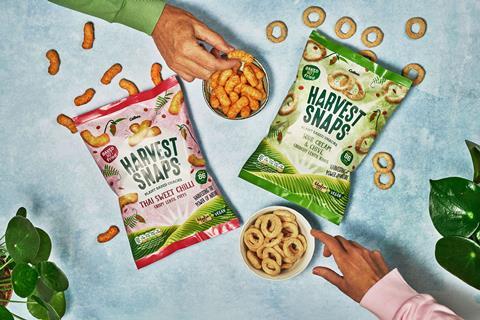
2. Better for You (BFY) Crisps and snacks outperforming the category by 9%
“Healthy snacking is a really predictable market in a lot of ways,” says Stuart Cordner from Coombe Road Spar in Belfast. “The minute Christmas is over it all becomes about ‘new year, new you’ and people want to get healthy.”
Seasoned retailers are under no illusion that many of these resolutions will fall by the wayside once the Easter eggs emerge. Yet, they know healthier snacking isn’t just for January. Or at least that’s what the government wants to see. In 2022 its controversial High in Fat, Salt and Sugar (HFSS) legislation started to re-shape the category (at least in the c-stores big enough to have to comply).
As Claire Hooper, marketing director at Calbee UK explains, this has buoyed Better for You snack sales.
“Growth is largely due to the impact of HFSS rules, with ‘low & light’ products +38.3% in value and +20.2% in volume. Kids BFY also increased volume sales by 6% and spend by 23.8% [Kantar: 52 w.e. 03.09.23],” she says.
“The HFSS regulations were designed to have a pretty big impact on ‘traditional’ snacking categories like confectionery, crisps, cakes and sweet biscuits,” adds Andrew Bradshaw, UK sales director at Dole Sunshine Company.
He says that although it’s early days, there’s evidence sales are up for HFSS-compliant products compared to their non-compliant equivalents.
“[This] will hopefully further encourage consumers to have a more balanced diet, including making more healthier choices in their snacking,” he says.

3. In a complex category ‘low and light’ is the most effective messaging
Gluten-free. Vegan. Low carb.
For more casual consumers it might as well be Venusian – they just want something that’s going to taste good while helping them feel they’re making a positive choice.
With this in mind, Richard Jefferson from Epicurium suggests keeping it simple.
“Displaying a low-calorie count is still the most important health cue, due to it being the most widely accepted form of measuring the perceived health credentials of food,” he says.
“Understanding calories is the first step for consumers beginning their fitness journey and calories are still utilised by seasoned health fanatics, although the latter will be looking beyond basic calorie counts and into the macros of the product. These macros then become leading health cues in their own right, specifically protein, fat and carbohydrate content.”
Hooper confirms that the types of products in Better for You that showed the strongest performance in relation to volume and spend were ‘low and light’ snacks [Kantar: 52 w.e. 03.09.23].
“Our own research, which Calbee UK carried out in 2023, supports this data,” she says. “We found that ‘reduced’ messages are still the most motivating for those opting for a healthier snack, with low fat and low calorie still the most appealing. However, free from messaging is still very important with protein and gut health gaining significant appeal.”
Harvest Snaps is at the heart of Calbee’s Better for You portfolio. The line is made from vegetables like lentils and chickpeas with a production method that preserves natural nutrients and flavours. For 2024, Smoky Barbecue and Tangy Salt & Vinegar Lentil Crisps are joining the range in multipack formats, and also as a 90g sharing format during February.
“Today, positive health within the snacking category is seen to be more about ‘managed health’, e.g. things that we can take out of our diet,” says Matt Collins, trading director at KP Snacks. This means that offering products with lower calories, as well as less saturated fat, salt, sugar, and additives, is becoming increasingly more important for snack brands.”
KPs’ popchips range (worth £46.6m RSV and growing in value at +6.3% Nielsen IQ, Total Coverage, Total Value, MAT 25.11.23) is designed to be “a more permissible snack option”, Collins says. The line comes in at 100 calories per serving and promises a third less fat than the market leader.
Meanwhile, Saputo highlights the growng importance of functional benefits. “While calorie consumption remains a popular cue, functionality is a trend retailers should not ignore,” says sss Abbie Pollington. “Consumers are placing more importance on healthy lifestyles and general wellness and how a product, such as naturally nutritious and protein rich cheese, can serve those needs.
“Via our Cathedral City Minis range, and Cathedral City Grab and Go Snack Bars, we are supporting consumers with a range of portion (and calorie) controlled snack-sized products. In fact, Cathedral City’s Cheese Snacking range has delivered +7.6% value growth in Symbols & Independents in the latest 52wks vs YAGO (IRI).”
ADVERTISEMENT
Grenade protein bars power sales

Grenade’s best-selling range of protein bars provide the perfect healthier option for customers looking for a protein-packed snack. The ground-breaking launch of Grenade OREO in 2023 created unrivalled demand for the latest indulgent snack, fast becoming the biggest selling protein bar in the UK[1] and a MUST STOCK for retailers. Coupled with it’s white chocolate partner, Grenade OREO White and alongside popular flavours Chocolate Chip Salted Caramel, Chocolate Chip Cookie Dough and White Chocolate Cookie, these protein bars belong amongst snacking favourites in impulse locations in-store. Their impressive rate of sale alongside a healthy POR makes them the perfect choice for savvy retailers.
Available from all major wholesalers including Booker & Bestway. Check with regional wholesalers for availability. RSP £2.85 per 60g*.
[1] IRI Total Marketplace, Protein Bars, Total Value Sales, 52w/e 26/11/2023
*Price is at the sole discretion of the retailer”
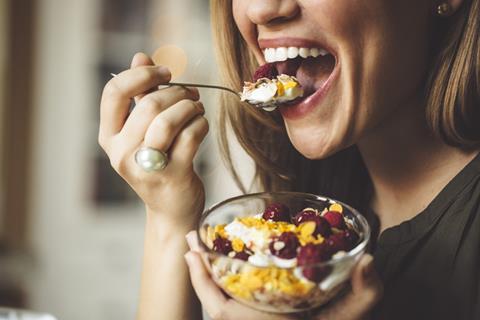
4. Healthy yoghurts are growing 48% in convenience
Basic calorie info is important. But in 2024, more health-savvy shoppers will be searching for snacks that help manage their gut health. And while sauerkraut and kombucha may win in some stores – yoghurts are a simple way for retailers to access the market,
“As the fastest-growing subcategories, Kefir and Protein are reshaping the Convenience Yogurt landscape, and Biotiful Gut Health’s (BGH) Original and fruity Cherry Kefir Drinks are among the top four Premium SKUs,” says a BGH spokesman.
“Sales of Kefir within convenience have doubled in the last three years, experiencing a 40% surge in value and a 21% boost in volume [IRI]. With regular innovation and a flow of new SKUs and flavours, Biotiful Gut Health proudly stands as the UK’s number one Kefir brand, shaping the future of gut health with every sip.
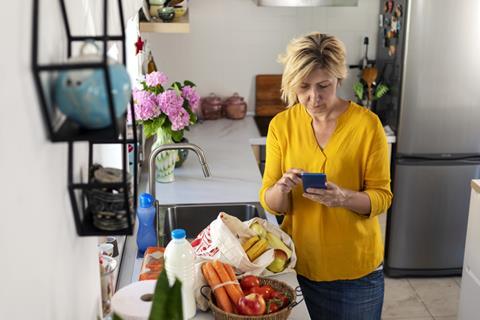
5. The cost-of-living crisis is holding the category back – for now
Is lack of money more likely to make us eat junk? Jefferson notes that during the last recession shoppers seemed to be soothing their worries with sugar and processed carbs.
“Data suggests that shoppers are already eating less healthily due to financial strains, a trend that was also seen during the 2008 credit crunch, with the substitute, cheaper and more readily available ready meals and processed foods, seeing a lot of demand,” he says.
“This trend leans more towards families and shopping for in-home consumption, but that doesn’t leave the healthier snacking segment unaffected.”
This means products need to be keenly priced. Hooper says that with some well-established snacks “becoming unaffordable in the current climate” Calbee can bridge the gap.
“Harvest Snaps offer everyday value and are a tasty alternative for those looking for an affordable snack from a brand that they recognise and can trust,” he says. Harvest Snaps is currently enjoying 54% volume growth.
Cordner says that value has become all-important to his new year healthy snacking offer.
“People have just had the most expensive Christmas of their lives,” he says. “So this January we’ve made sure everything in the store is about health and value. That’s the key for us this year.”
Jefferson adds that sports nutrition has been the biggest loser from the cost-of-living crisis. Yet that opens up opportunities for snacking to bridge the gap.
“Sports nutrition has gained popularity outside of pro athletes in recent years but is now cutting back in order to keep offering their protein options in the midst of the cost-of-living crisis,” he says.
“Meanwhile, this opens up an opportunity for snack brands to position themselves as affordable alternatives to these sports nutrition brands.”
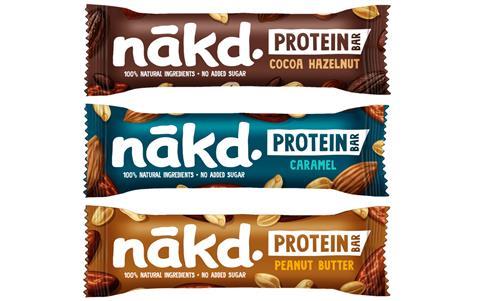
6. Protein bars are still a go-to product
The promise of more protein is still connecting with consumers, whether they’re gym bunnies or couch potatoes. At Sue’s store they’re a cornerstone of her healthy snacking offer.
“We do a lot of the protein bars and they do well,” says Sue.
“In protein we do the Trek bars, Barebells, Grenade and Snickers and Mars Protein. That’s quite a bit of shelf space.”
Over the last year rising inflation has made the category look pricey. Yet Cordner believes that doesn’t make a difference to shoppers who want to make bars a key part of their fitness regime.
“What’s interesting is that protein bars seem basically ‘price insensitive’,” he says. “In confectionery people want to go for a deal or a multipack. That just doesn’t happen with protein bars, they sell consistently.”
Lotus Bakeries-owned snack bar brand Nakd has reported strong sales, having entered the protein market last year with three bars containing 7g protein each. “In the cost of living crisis, consumers want that value in products, they’re definitely more attuned to the [on-pack] claims, they definitely are reading the pack more,” says senior brand manager Charlotte Prinsley.
“With the launch of our protein bars, it was the first time we were launching something that was not another flavour within our range,” adds Nakd marketing manager Jessica Englund. “We wanted to tackle the added benefits trend and it’s been really phenomenal for us. Our protein range delivered £2.35m in 2023 and was only launched last summer [Circana].
“This year, we’ll be tapping into the added benefits trend further, so watch this space!”
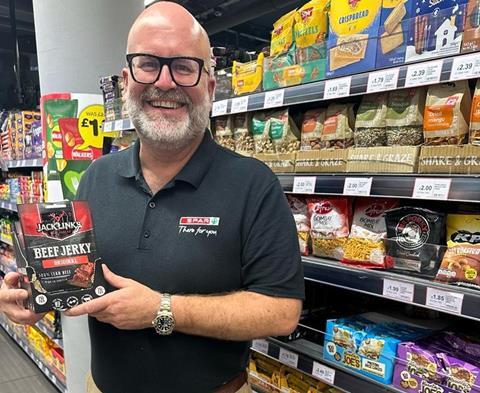
7. Jerky and biltong have seen convenience value sales grow 44% YOY
Another snack bolstered by its high protein levels is jerky and biltong, which has seen growth in convenience over the last 12 months, up 44% in value and 37% in units (Nielsen).
Total sales for the jerky and biltong meat snacks category are growing extremely strongly in the convenience sector over the last 12 months - by over 44% in value and 37% in units – Jack Link’s is driving this growth with 60% value growth and 50% volume growth (Nielsen).
”The category has more than doubled in value over the last five years, growing in both value and volume, and has the headroom to double again as still less than one in ten households buy it,” claims Shaun Whelan, Jack Link’s convenience/wholesale and OOH controller.
“The jerky and biltong meat snacks category is becoming more popular in the convenience sector as we see more and more shoppers search out high protein, tasty convenient snacks that are seen to be healthier alternatives to traditional snacks,” he says, highlighting that Jack Link’s Beef Jerky Original 25g has the highest unit rate of sale of any product in the category. “The opportunity to meet shopper demand and unlock additional sales is huge.”
Paul Stone, owner of Spar Oxford Road in Manchester, has been astounded by demand for jerky at his store. “Since adding Jack Link’s to my range of snacking products, I’ve been amazed by the sales,” he says. “We’ve been very surprised by how much of it we’ve sold. We have a number of student customers who look for a healthier snacking alternative and they seem to love Jack Link’s. In one week, and in only one store, we sell more than 100 packets!
“Siting Jack Link’s on the main fixture has also helped with sales as our customers know where to find them. Having Jack Link’s has driven incremental sales and profit.”
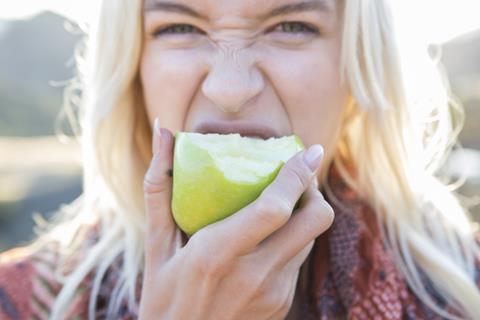
8. One in three adults in the UK claim to eat their five-a-day
The UK and Ireland topped a table of 33 countries when it came to eating five-a-day, with 33% of UK adults surveyed claiming to eat five or more portions of fruit and veg every day, according to a recent report from the Organisation for Economic Cooperation and Development (OECD).
Stuart’s approach to new year melds health and value by putting fruit where customers can easily pick it up.
“This is the time of year we move the confectionery out of the bins and put in the fruit,” he says. “Parents especially like seeing it there.”
To make fruit more enticing Dole has announced a redesign across its fruit in juice and fruit in jelly range to really highlight on-pack claims like ‘no added sugar’.
“When it comes to snacking, we know fresh fruit can sometimes be considered a bit virtuous or perhaps not the most exciting option, so we wanted this new packaging to remind our consumers that our fruit snacks provide all the health benefits of fresh fruit but at a low price and in a format which is delicious,” says Bradshaw.






















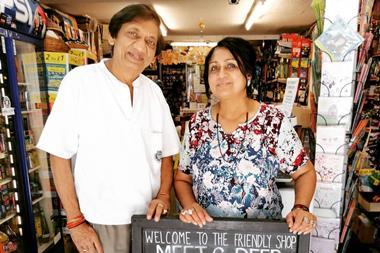
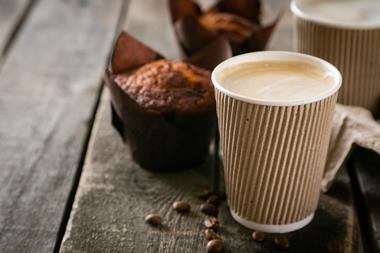

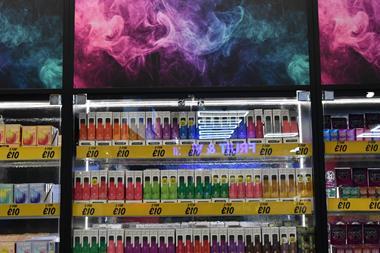

No comments yet